Celebrating the 400-Year Legacy of Ninth Master Guru Tegh Bahadur
Guru Gobind Singh’s describes the spiritual bliss obtained in the remembrance of the Ninth Master Guru Tegh Bahadur Sahib. Nine treasures which will be showered on the person. In our Ardas -supplication to God and Guru, every morning and evening and whenever, we say a line: “ਤੇਗ ਬਹਾਦਰ ਸਿਮਰਿਐ ਘਰ ਨਉ ਨਿਧਿ ਆਵੈ ਧਾਇ॥ ਸਭ ਥਾਂਈ ਹੋਇ ਸਹਾਇ॥” Let’s remember Tegh Bahadur, the nine treasures shall come to our homes, and Guru Sahib will help us everywhere. As the Sikh world readies to observe and celebrate the fourth centennial birthday of Guru Tegh Bahadur, WSN columnist Bhupinder Singh goes through Guru Sahib’s life, message, contribution and martyrdom.
![Guru Gobind Singh’s describes the spiritual bliss obtained in the remembrance of the Ninth Master Guru Tegh Bahadur Sahib. Nine treasures which will be showered on the person. In our Ardas -supplication to God and Guru, every morning and evening and whenever, we say a line: “ਤੇਗ ਬਹਾਦਰ ਸਿਮਰਿਐ ਘਰ ਨਉ ਨਿਧਿ ਆਵੈ ਧਾਇ॥ ਸਭ ਥਾਂਈ ਹੋਇ ਸਹਾਇ॥” Let’s remember Tegh Bahadur, the nine treasures shall come to our homes, and Guru Sahib will help us everywhere. As the Sikh […]](https://www.theworldsikhnews.com/wp-content/uploads/2020/10/399th-Prakash-Gurparb-of-Sri-Guru-Teg-Bahadur-Sahib-Ji-360x239.jpg)
ON 1 APRIL 1621, IN THE HOUSE OF THE SIXTH MASTER GURU HARGOBIND SAHIB, A GREAT SOUL WAS BORN. The child of Mata Nanaki was born in the early hours of fragrant dawn. The newborn child was the sixth child. Guru Hargobind Sahib saw the brave and heroic spirit of his own late father -the Fifth Master -Guru Arjan Dev in him. Guru Hargobind Sahib blessed the newborn child with these words, “May the Immortal Lord bestow on you all the divine blessings.”
When the child Tegh Bahadur was 4 years old, Guru Hargobind Sahib personally took him to Bhai Buddha Ji -a renowned exponent of Sikhism and requested him to accept the child as a pupil. He said, “You were kind enough to be my teacher. O Enlightened One, accept Tegh Bahadur as your pupil.”
The child Tegh Bahadur bowed before the wise sage Baba Buddha, who blessed him in acceptance as his student. The education started with the recitation of Mool Mantra. Baba Buddha Ji shared his own spiritual life experiences with the new student. In addition, Baba Buddha Ji, who had spent time with all the six Gurus, from Guru Nanak Dev Ji to Guru Hargobind Sahib Ji, shared historical anecdotes from Gurus’ lives with him. Additionally, Tegh Bahadur also learned poetry, philosophy and history from Bhai Gurdas Ji, horse riding and swordsmanship from Bhai Bidhi Chand and warfare skills from Jati Mal. Still, his main source of inspiration was father Guru Hargobind Sahib.
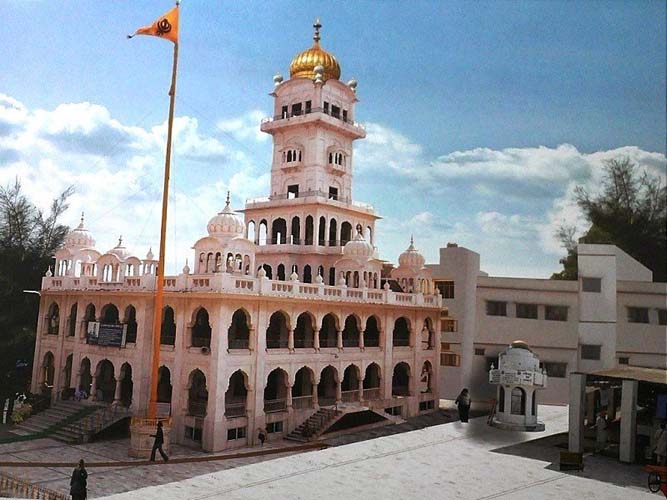
Tegh Bahadur as a child would spend long hours in deep meditation, and his poetic outpourings offered glimpses of a budding poet. When Tegh Bahadur’s elder brother -9-year-old Baba Atal passed away at a very young age, it made a lasting impression on him regarding the significance of abiding by the Will of God.
During the family visit to Tarn Taran with father Guru Hargobind Sahib, Tegh Bahadur heard eyewitness accounts of the supreme sacrifice of grandfather Guru Arjan Sahib. At Khadur Sahib, sacred to the memory of Guru Angad Dev, Tegh Bahadur witnessed and absorbed history.
During the family visit to Tarn Taran with father Guru Hargobind Sahib, Tegh Bahadur heard eyewitness accounts of the supreme sacrifice of grandfather Guru Arjan Sahib. At Khadur Sahib, sacred to the memory of Guru Angad Dev, Tegh Bahadur witnessed and absorbed history. From there their family visited Goindwal, their ancestral home. Here he heard about the life story of Guru Amar Das and their great-grandfather Guru Ram Das. From there, they all returned back to Amritsar. The tour was highly inspirational as it connected child Tegh Bahadur deeply to the spiritual aspects of the faith. Tegh Bahadur was blossoming -inspired by history, with the tenderness of a poet, resolve and the courage of a warrior, and mysticism of a spiritual master.
Accompanied by his father, while barely 10 years old, Tegh Bahadur witnessed the peaceful, calm detachment and suppressed sorrow at the passing away of his teacher and guide Baba Buddha Ji in 1631.
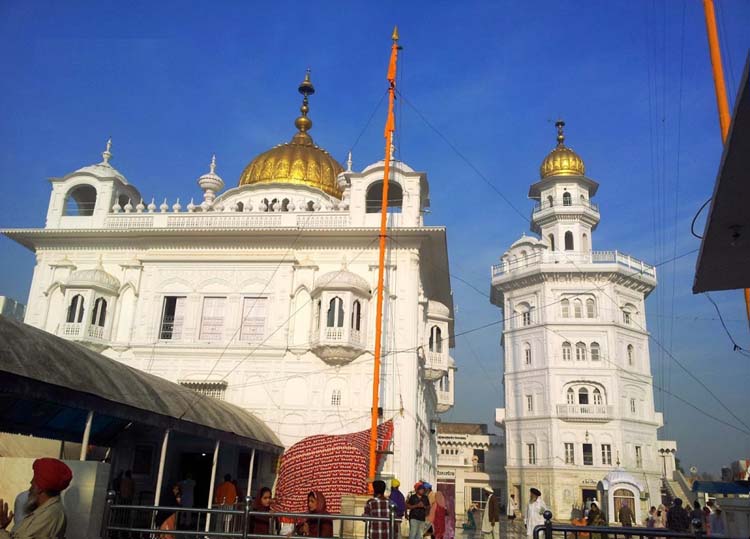
In 1634 at the age of 14, Baba Tegh Bahadur got permission from his father Guru Hargobind Sahib to join the battle in Kartarpur. The fifty thousand men of Mughal army were led by Kale Khan, the brother of Mukhlis Khan, who had died in the first battle. Kale Khan was assisted by Qutab Din, Painde Khan, Anwar Khan and Usman Khan. The Sikhs were led by Bidhi Chand and Baba Gurditta, the eldest son of Guru Hargobind Sahib. Baba Tegh Bahadur displayed exemplary courage and heroism and his exquisite swordsmanship became the talk of the town.
Guru Hargobind Sahib was very pleased that his son was not just a saint at heart but also a brave warrior.
Guru Hargobind Sahib was very pleased that his son was not just a saint at heart but also a brave warrior. In that battle, Guru Har Gobind Sahib had a one-to-one fight with his estranged protégé Painde Khan who had joined the Mughal army with insider information and treacherous designs. In this fight, he was killed by Guru Ji. After the death of Kale Khan and Qutub Din, the royal army retreated. This victory against heavy odds destroyed the myth of Mughal invincibility.
In 1636, Guru Hargobind Ji made a sudden visit to Goindwal Sahib to be with Bhai Gurdas Ji -the key exponent of Guru Granth Sahib, whose end was approaching. Baba Tegh Bahadur again witnessed the passing away of another great soul whose life and teachings had made a lasting impression on his tender mind. Baba Tegh Bahadur was deprived of the personal guidance, the experience of a great saint, scholar, poet and philosopher. In 1638, Baba Tegh Bahadur lost his eldest brother Baba Gurditta.
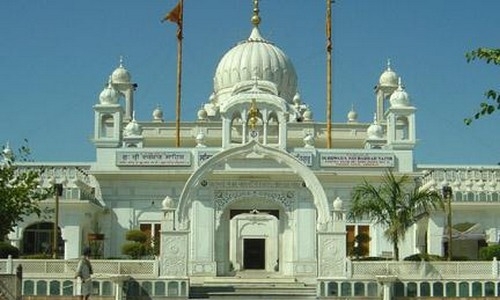
Baba Tegh Bahadur was nearly 20 years when he married Gujri, daughter of Bhai Lal Chand and Bibi Bishan Kaur in Kartarpur. It was an arranged marriage initiated by Holy Mother Nanaki. Guru Hargobind Ji had retired to Keeratpur after the Kartarpur battle and spent the last ten years of his life there with family including Baba Tegh Bahadur and his bride. He breathed his last on March 3, 1644. Guru Har Rai, his grandson succeeded him as the Guru. Guru Hargobind had asked everyone to bow to the newly anointed Guru and Baba Tegh Bahadur was the first one to bow to his nephew.
A month later Baba Tegh Bahadur left Keeratpur with his mother, wife, and brother-in-law Kirpal for Bakala. At the time of departure, Baba Tegh Bahadur was 23 and devoted his time in deep meditation. He, however, did not renounce the world but only worldliness. Mata Gujri -his wife followed his foot-steps and also meditated.
It was midnight of 30 March 1664 when the call came to carry the ‘Torch of Light’ of Guru Nanak Dev Ji to spread its light all across and to save Dharma and uphold righteousness in the formidable times ahead.
It was midnight of 30 March 1664 when the call came to carry the ‘Torch of Light’ of Guru Nanak Dev Ji to spread its light all across and to save Dharma and uphold righteousness in the formidable times ahead. A day before his demise, Guru Har Krishan consecrated his Baba who lived in the village Bakala as the next Guru. The discovery of the Guru is another legendary tale.
An interesting anecdote happened when Guru Hargobind had anointed his grandson Har Rai as his spiritual heir. He, in turn, had anointed his younger son Har Krishan as the heir. Now, 20 years later Guru Har Krishan had anointed his grandfather’s youngest brother as his heir and the ninth Guru.
Guru Ji purchased land seven miles away from Keeratpur and laid the foundation of the city of Anandpur in June 1665. Shortly afterwards in November 1665, he started on his long journey of the east, visiting places visited by Guru Nanak Sahib during his first Udassi. Towards the end of May 1666, Guru Ji reached Patna and stayed there till August. Stopping on the way at various places, Guru Sahib reached Dacca in October 1666.
At the time of the birth of Tenth Master Guru Gobind Singh on 26 December 1666 in Patna, Guru Tegh Bahadur Ji was in Dacca. From there Guru Sahib proceeded to Dhubri, Kamrup in February 1668, at the request of Raja Ram Singh, who was leading an expedition against Ahoms, who, on the orders of Emperor Aurangzeb. were annexing Guwahati. Guru Sahib helped the beleaguered King and was able to iron out a resolution of the dispute with the Ahoms.
Pandit Kirpa Ram, the head of a Sanskrit institution in Kashmir, as leader of a delegation of 500 Kashmiri Pandits visited Anandpur and pleaded for Guru Sahib’s intervention to stop forced conversions. Guru Sahib was considering all aspects when child Gobind Rai suggested his father’s supreme sacrifice to halt the tide of forcible conversion to Islam.
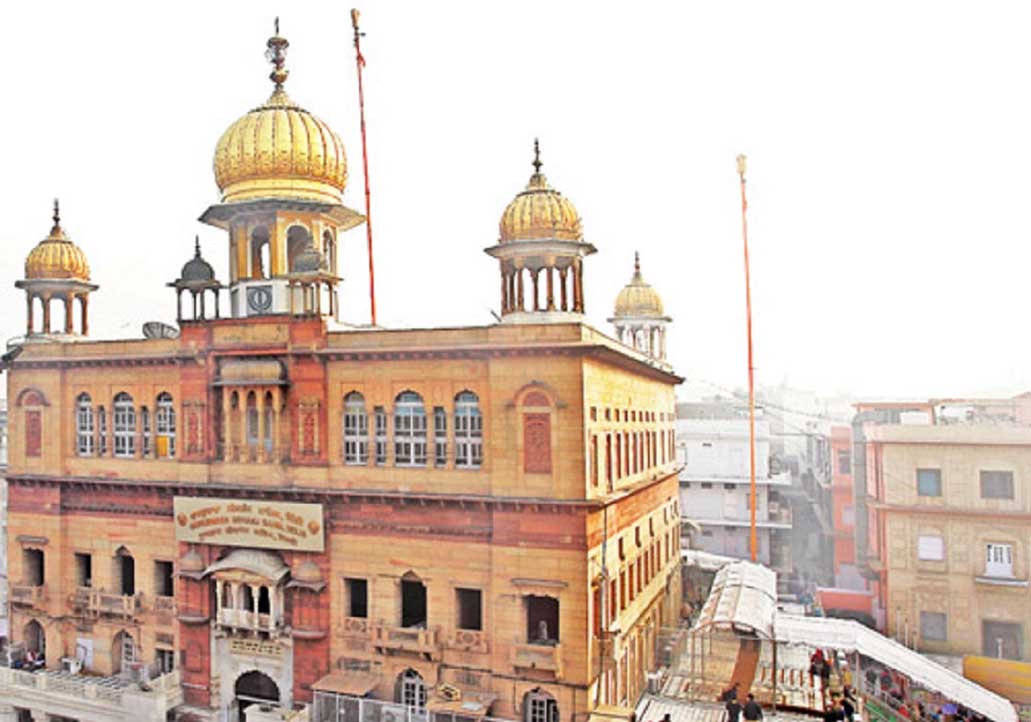
In a development, unparalleled in the annals of history, on 11 November 1675, at Chandni Chowk, Delhi, Guru Tegh Bahadur laid down his life for the protection of Dharma -freedom of faith, though some tend to parochially see it only as a protection of the Hindu faith.
Guru Gobind Singh Ji described Guru Tegh Bahadur’s sacrifice thus:
“ਤਿਲਕ ਜੰਞੂ ਰਾਖਾ ਪ੍ਰਭ ਤਾ ਕਾ ॥ ਕੀਨੋ ਬਡੋ ਕਲੂ ਮਹਿ ਸਾਕਾ ॥
ਸਾਧਨ ਹੇਤਿ ਇਤੀ ਜਿਨਿ ਕਰੀ ॥ ਸੀਸੁ ਦੀਆ ਪਰੁ ਸੀ ਨ ਉਚਰੀ ॥੧੩॥”
He protected (with his life) the forehead mark and sacred thread (of the Hindus), which marked an unparalleled heroic event in the Kal (Iron) Age. For the sake of men of other faith, he laid down his head without a groan.
Having experienced life from close quarters, Guru Tegh Bahadur Sahib has dwelt on many aspects of leading life in the revealed Word of the Almighty as enshrined in Guru Granth Sahib. The following Shabad captures the essence of his teachings:
ਸੋਰਠਿ ਮਹਲਾ ੯ ॥
“ਮਨ ਰੇ ਕਉਨੁ ਕੁਮਤਿ ਤੈ ਲੀਨੀ ॥
ਪਰ ਦਾਰਾ ਨਿੰਦਿਆ ਰਸ ਰਚਿਓ ਰਾਮ ਭਗਤਿ ਨਹਿ ਕੀਨੀ ॥੧॥ ਰਹਾਉ ॥
ਮੁਕਤਿ ਪੰਥੁ ਜਾਨਿਓ ਤੈ ਨਾਹਨਿ ਧਨ ਜੋਰਨ ਕਉ ਧਾਇਆ ॥
ਅੰਤਿ ਸੰਗ ਕਾਹੂ ਨਹੀ ਦੀਨਾ ਬਿਰਥਾ ਆਪੁ ਬੰਧਾਇਆ ॥੧॥
ਨਾ ਹਰਿ ਭਜਿਓ ਨ ਗੁਰ ਜਨੁ ਸੇਵਿਓ ਨਹ ਉਪਜਿਓ ਕਛੁ ਗਿਆਨਾ ॥
ਘਟ ਹੀ ਮਾਹਿ ਨਿਰੰਜਨੁ ਤੇਰੈ ਤੈ ਖੋਜਤ ਉਦਿਆਨਾ ॥੨॥
ਬਹੁਤੁ ਜਨਮ ਭਰਮਤ ਤੈ ਹਾਰਿਓ ਅਸਥਿਰ ਮਤਿ ਨਹੀ ਪਾਈ ॥
ਮਾਨਸ ਦੇਹ ਪਾਇ ਪਦ ਹਰਿ ਭਜੁ ਨਾਨਕ ਬਾਤ ਬਤਾਈ ॥੩॥੩॥ ”
Guru Sahib says that we are missing a lot in life by not seeing life in totality, but keep engaged only in scratching the surface. Guru Sahib questions, “From where have you taken this wrong and selective wisdom? You are coveting other women and relishing slander and putting others down. The extra-marital relations are titillating and the slander is ravishing to us, engrossing us in completely forgetting ourselves while our worldly time is breezing by. What are we not doing? Guru Ji says that our actions do not reflect any wisdom or our deeper understanding. The path of emancipation has not been explored by us; instead all our full efforts have been on bettering our financial needs and resources.
He rhetorically asks, “What was to be done and replies –meditate on God, serve Guru by imbibing his teachings, knowledge to attain emancipation and salvation.” The result is that in delusion you are looking for God outside in the wilderness, while He is within you. Whatever is within you will only be reflected outwards like a mirror. So, if you were in a state of bliss, you would have encountered it all around you. Guru Sahib concludes that you have been wandering through many lives in illusion, still do not know the wisdom to get out of the cycles of reincarnations.
Guru Tegh Bahadur’s advice is to meditate on God Almighty and merge into Him. If this message of Guru Sahib becomes our mission in life then that will be a true homage to his great legacy.
References:
Singh, Ranbir. Guru Tegh Bahadur; Divine Poet, Savior and Martyr. Chief Khalsa Diwan. 1975.
Singh, Dr Trilochan. Guru Tegh Bahadur: Prophet and Martyr. Gurdwara Parbandhak Committee, Delhi. 1967.
Kohli, Dr Surindar Singh. The Sword and the Spirit. National Book Shop. Delhi
Dil, Dr Balbir Singh. Guru Tegh Bahadur: Jeewan Te Rachna (Punjabi). Punjabi University. 1975.
Singh, Fauja & Talib, Gurbachan Singh. Guru Tegh Bahadur: Martyr and Teacher. Punjabi University. 1996.
https://www.bbc.co.uk/religion/religions/sikhism/people/teghbahadur.shtml
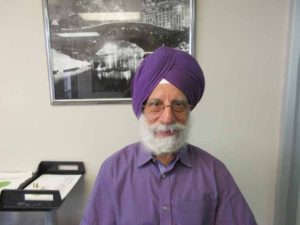 An engineer by profession, hailing from Myanmar, educated in India, Bhupinder Singh is a Houston-based businessman, with a keen interest in writing books and articles on Sikh history, motivation and spirituality.
An engineer by profession, hailing from Myanmar, educated in India, Bhupinder Singh is a Houston-based businessman, with a keen interest in writing books and articles on Sikh history, motivation and spirituality.
